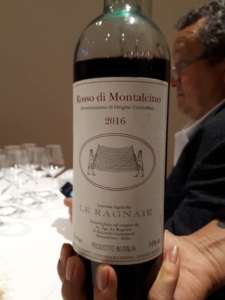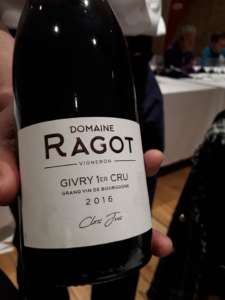The top seminar of this fine edition of Thoroughbred Sangiovese was the comparison of Lands of Sangiovese and Burgundy by Armando Castagno, beautifully directed by Davide Bonucci, in the magnificent location of the Santa Maria della Scala museum complex, overlooking the Cathedral of Siena
.
Pinot Noir is to Burgundy as Sangiovese is to Tuscany (in its expressions of Chianti and Montalcino) and Romagna: 4 Sangioveses with 4 Burgundy wines discovering similarities and diversities.
Pinot noir and Sangiovese are both ubiquitous grape varieties, that is, they are planted in different areas of the world, but they are able to perform best only in the habitats most suited to them, wines that therefore have in common an 'innate ability to interpret terroir, and on the other hand are complicated in the vineyard and in the cellar.
For color, both wines are always transparent with ruby tones when young, which will turn to garnet with evolution. Pinot noir has an aromatic profile while Sangiovese has a nice floral quality, and much more pronounced tannins.
The environmental factor, i.e., the land, the human factor, i.e., the style, and the time factor always play a key role. Marly and complex soils for pinot noir and different geological contexts for sangiovese from galestro to alberese and sandstone. The style differs in terms of the timing of maturation, the quality of the woods and the time of release, and finally the time factor: after 12-14 years the wines aged in the two territories become closer.


Montalcino, with its strong rural and peasant soul, expresses one of the Italian territories with the best vineyard savoir faire: the real pearls are those that speak Montalcinese.
In Burgundy, the Côte Chalonnaise is a continuation of the Côte d'Or and has five municipal appellations (AOC):
- Bouzeron: the paradise of aligoté, a grape variety from which only white wines are made
- Rully: mainly the same grape varieties as in the Côte d'Or, chardonnay and pinot noir, are cultivated
- Mercurey: capital of the Côte Chalonnaise, it is the second municipality in the production volume rankings in Burgundy after Beaune and produces the most tannic and long-lived wines in the Côte
- Givry: maintains an old vocation for pinot noir, now present for 85% of production
- Montagny: AOC reserved for chardonnay-based whites


These are the labels in the tasting:
- Rosso di Montalcino Le Ragnaie 2016, by Riccardo and Jennifer Campinoti, organically farmed in the area of Passo del Lume Spento, the highest point in the entire Montalcino district (600 meters above sea level), a fine, fresh and elegant wine
- Givry 1er Cru, Domaine Ragot 2016, a very fine wine with hints of violet flowers, wisteria and lavender
- Chianti Classico Riserva Vigna Barbischio Maurizio Alongi 2016, Gaiole: French in style and Chiantigian in rigor, tannins integrated into the wine's texture and nice acidity that helps make up the harmony
- Mercurey 1er Cru, Clos du Roy, Tupinier Bautista 2016: berry fruit and hints of blood orange and lovely tannin and energy and strength for this lovely red
- Chianti Classico Chielle, Podere L'Aia 2016: the Chielle vineyard is above 600 m., beautiful nose, balsamic, clearing mouth with freshness and acidity that bursts
- Saint Romain Absolu Domaine Henri&Gilles Buisson 2016: complete reds with great aromatic completeness
- Marta Valpiani Crete Azzurre 2016: mother and daughter who changed Sangiovese di Romagna, a fine, elegant and extremely fragrant wine
- Santenay David Moreau Cuvée S 2016: dedicated to his grandparents by young David Moreau, elegant nose, fine mouthfeel with placid, gritty tannins tending toward nice length and intensity

Wine is culture and passion, and the two-hour seminar was a rich space of extraordinary education steeped in stories, memories, images, scents and flavors.
Thank you Armando: it was a pleasure listening and tasting with you!
Thank you Davide for the professionalism and passion with which you enhance our Sangiovese and provide us with unique cultural moments!










